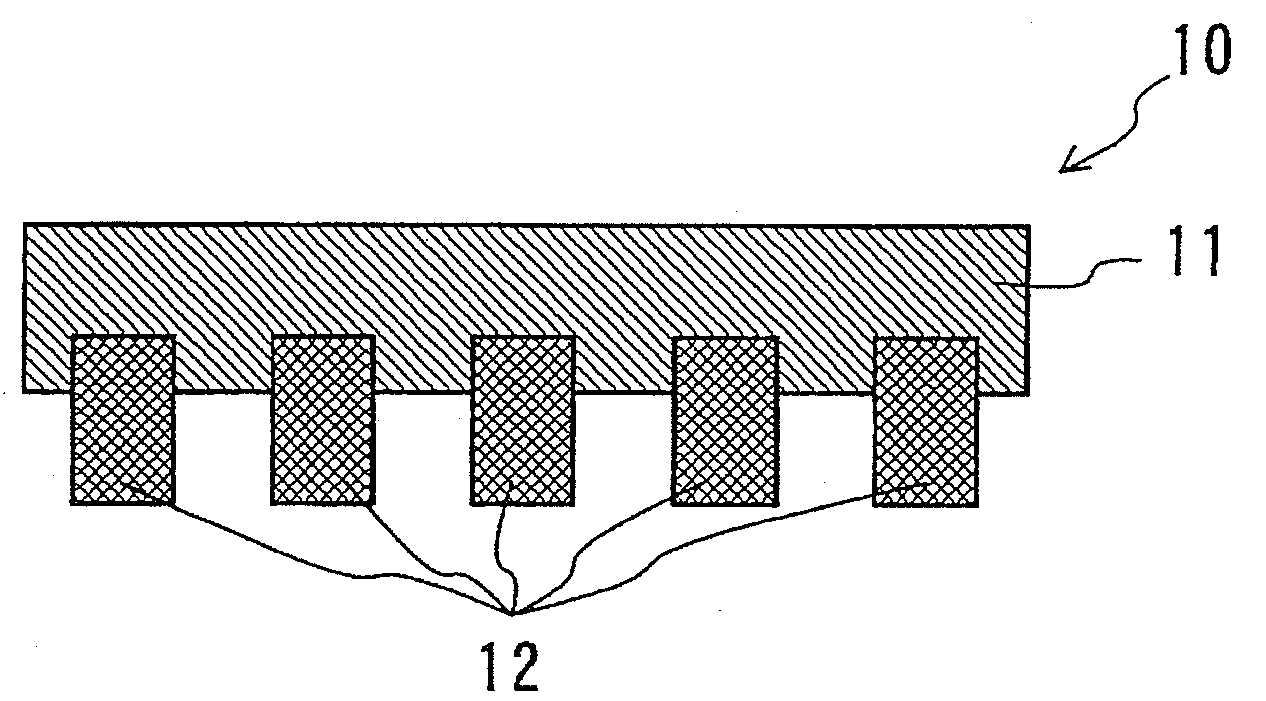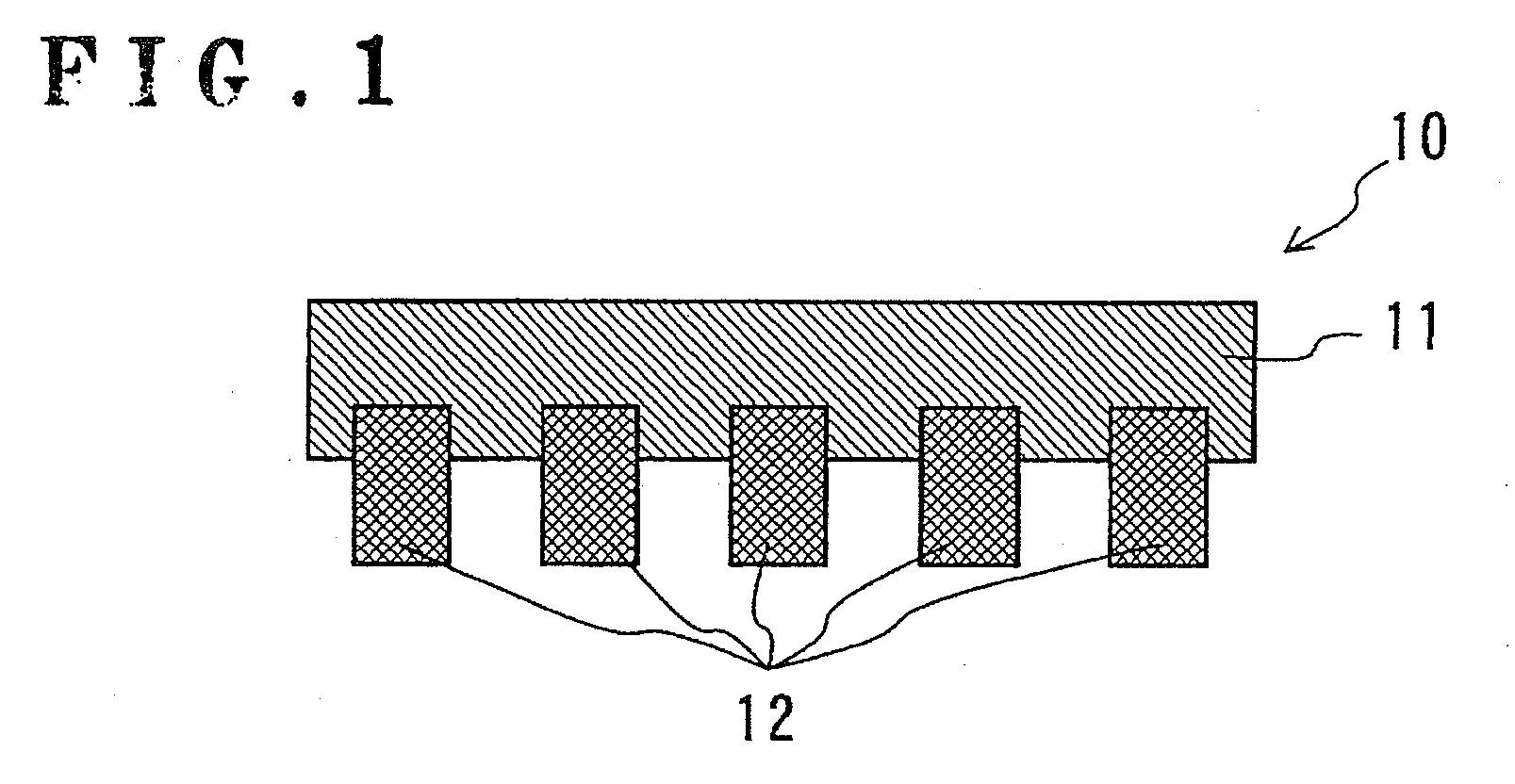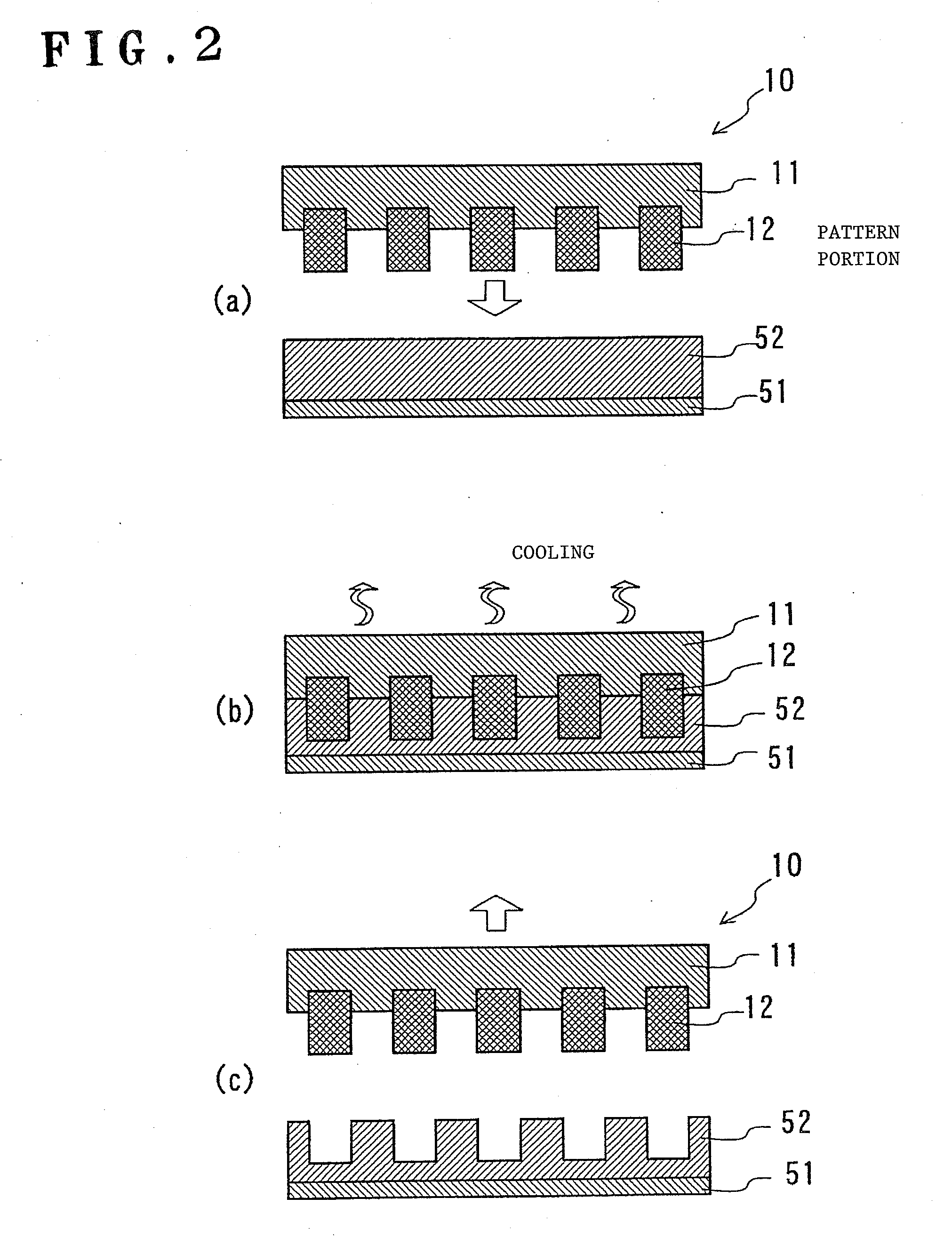Mold for pattern transfer
- Summary
- Abstract
- Description
- Claims
- Application Information
AI Technical Summary
Benefits of technology
Problems solved by technology
Method used
Image
Examples
first embodiment
[0030]FIG. 1 shows a summary cross-sectional view of the mold 10 of a first embodiment of the invention. The mold 10 comprises a base portion 11, having a flat main face, and a pattern portion 12, provided so as to protrude from the main face of the base portion 11; by this means, the pattern portion 12 forms a relief shape in the main face of the base portion 11. The mold 10 of the first embodiment is characterized in being used for transfer when the molten-state resin film is a thermoplastic resin, and in particular, when transfer by thermal nanoimprinting is used.
[0031]Here, a transfer method using thermal nanoimprint processing is described in summary, referring to FIG. 2A through FIG. 2C. As shown in FIG. 2A, a PMMA (polymethyl methacrylate), polycarbonate, acrylic, or other thermoplastic resin 52 is applied by spin coating or another thin film formation means onto a substrate 51 comprising Si or another semiconductor. Then, the substrate 51 with the resin 52 applied is heated ...
second embodiment
[0042]Next, the mold 110 of a second embodiment of the invention is described, referring to FIG. 7. The mold 110 comprises a base portion 111 having a flat main face, and a pattern portion 112 provided so as to protrude from the main face of the base portion 111; by this means the pattern portion 112 forms a relief shape in the main face of the base portion 111. The mold 110 of the second embodiment is characterized in being used for transfer, and in particular for transfer by photo-nanoimprint transfer methods, when the molten-state resin film is a photo-curing resin. Here, a transfer method using photo-nanoimprint processes is described in summary referring to FIG. 8A through FIG. 8C.
[0043]First, as shown in FIG. 8A, a photohardening resin 152, comprising an epoxy, silicone, polyimide, or similar, is applied by a spin coater or other thin film formation means onto a substrate 151 comprising Si or another semiconductor. Next, as shown in FIG. 8B, a mold 110 is pressed with a pressu...
PUM
| Property | Measurement | Unit |
|---|---|---|
| Electrical resistance | aaaaa | aaaaa |
| Shape | aaaaa | aaaaa |
| Area | aaaaa | aaaaa |
Abstract
Description
Claims
Application Information
 Login to View More
Login to View More - R&D
- Intellectual Property
- Life Sciences
- Materials
- Tech Scout
- Unparalleled Data Quality
- Higher Quality Content
- 60% Fewer Hallucinations
Browse by: Latest US Patents, China's latest patents, Technical Efficacy Thesaurus, Application Domain, Technology Topic, Popular Technical Reports.
© 2025 PatSnap. All rights reserved.Legal|Privacy policy|Modern Slavery Act Transparency Statement|Sitemap|About US| Contact US: help@patsnap.com



